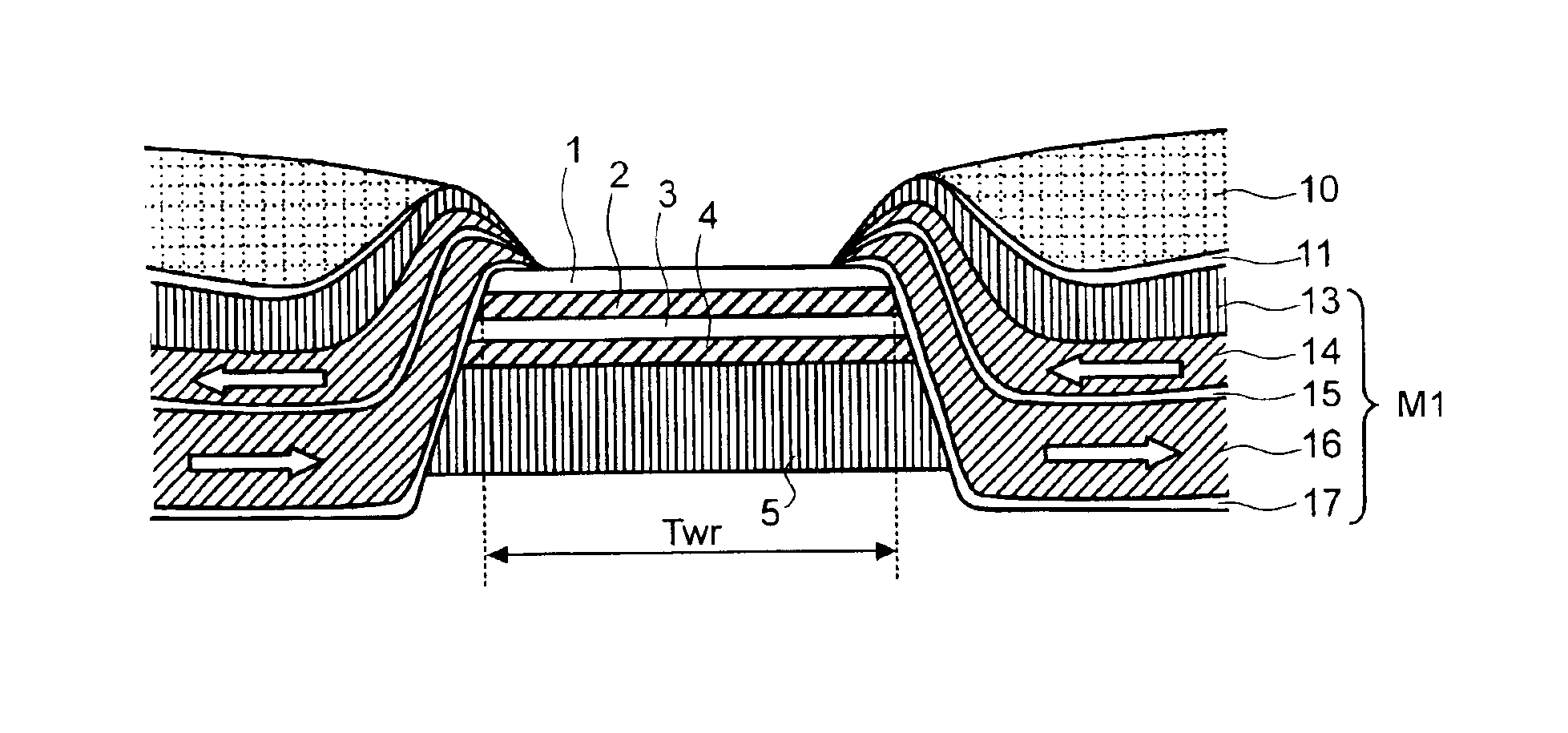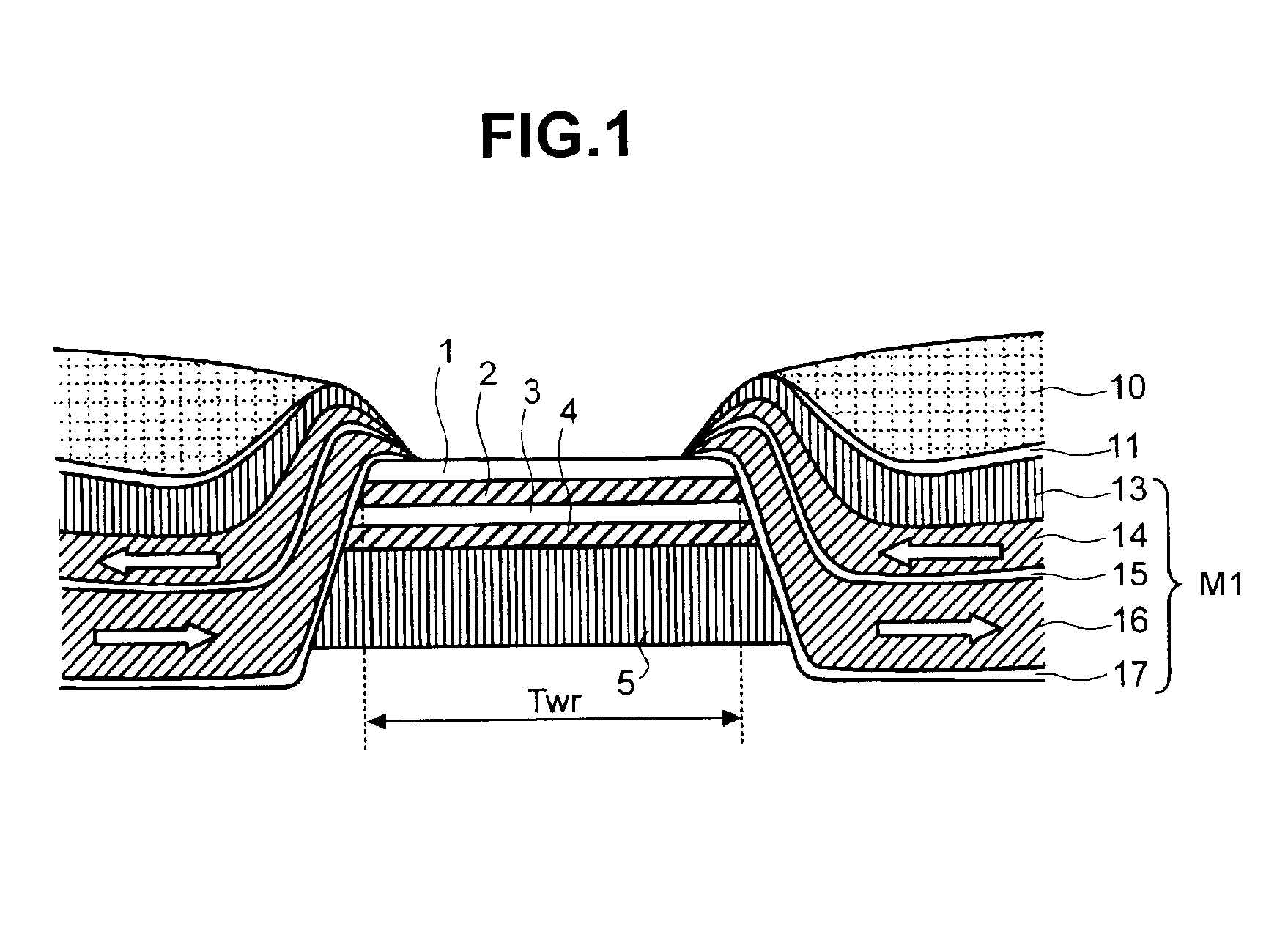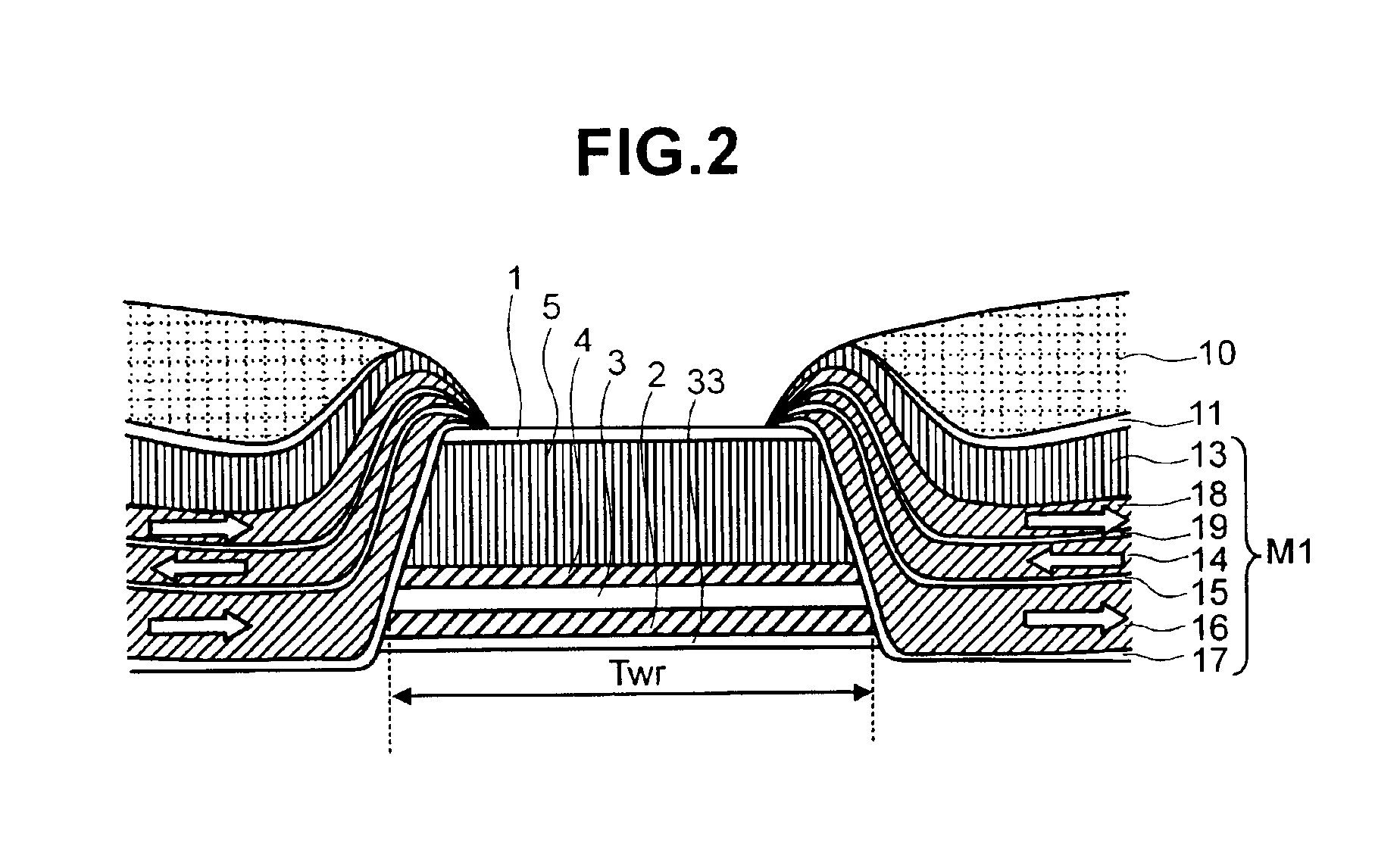Magnetic head with a lamination stack to control the magnetic domain
a magnetic domain and lamination stack technology, applied in the field of magnetoresistive heads, can solve the problems of barkhausen noise and waveform instability, increase of output asymmetry, overlaid ferromagnetic film, etc., and achieve the effect of greater sensitivity and higher stability
- Summary
- Abstract
- Description
- Claims
- Application Information
AI Technical Summary
Benefits of technology
Problems solved by technology
Method used
Image
Examples
embodiment 1
[0048]FIG. 3 shows a cross-sectional view of a CPP-GMR element according to the invention. Layers 1, 2, 3, 4, 5, 13, 14, 15, 16 and 17 shown in FIG. 3 are the same as in the structure of the embodiment 1 shown in FIG. 1. Further, the leads 10 are disposed so as to sandwich the stack which comprises 1, 2, 3, 4 and 5.
[0049]At both end portions of the stack which comprises 1-5, an insulating layer 30 is disposed, with seed layer 17 overlying the insulating layer, and magnetic layers 16 and 14 are disposed with non-magnetic film 15 between them. Nonmagnetic film 19 is disposed on magnetic film 14, and magnetic film 18 is imposed on non-magnetic film 19. An anti-ferromagnetic film 13 for fixing the magnetic orientation of the magnetic film 18 in one direction is disposed on magnetic film 18. It is, however, noted that this anti-ferromagnetic film 13 may be eliminated, for example, by properly selecting the material and thickness of the magnetic film and the non-magnetic film which is dis...
embodiment 4
[0062]In addition, when the total film thickness of the magnetic films in this embodiment and the embodiment 4 are the same, the film thickness of each magnetic film layer is reduced, since there are more magnetic films laminated with non-magnetic films in this embodiment, and since anti-ferromagnetic intensity is increased in reverse proportion to film thickness, coupling force in the lamination is strengthened and stabilized. As a result, this embodiment has the further advantage that it is less easily influenced by heat.
[0063]On the other hand, even when, as in this embodiment, more magnetic films are laminated with the non-magnetic films as compared to embodiment 4, and the film thickness is increased by just the thickness of magnetic film 22 as compared to the structure of embodiment 4, the function of the magnetic film as a side shield can be improved. These advantages can be obtained in a similar manner even when the structure of this embodiment is applied to GMR and CPP-GMR,...
PUM
| Property | Measurement | Unit |
|---|---|---|
| magnetic | aaaaa | aaaaa |
| magnetoresistive | aaaaa | aaaaa |
| magnetic field | aaaaa | aaaaa |
Abstract
Description
Claims
Application Information
 Login to View More
Login to View More - R&D
- Intellectual Property
- Life Sciences
- Materials
- Tech Scout
- Unparalleled Data Quality
- Higher Quality Content
- 60% Fewer Hallucinations
Browse by: Latest US Patents, China's latest patents, Technical Efficacy Thesaurus, Application Domain, Technology Topic, Popular Technical Reports.
© 2025 PatSnap. All rights reserved.Legal|Privacy policy|Modern Slavery Act Transparency Statement|Sitemap|About US| Contact US: help@patsnap.com



